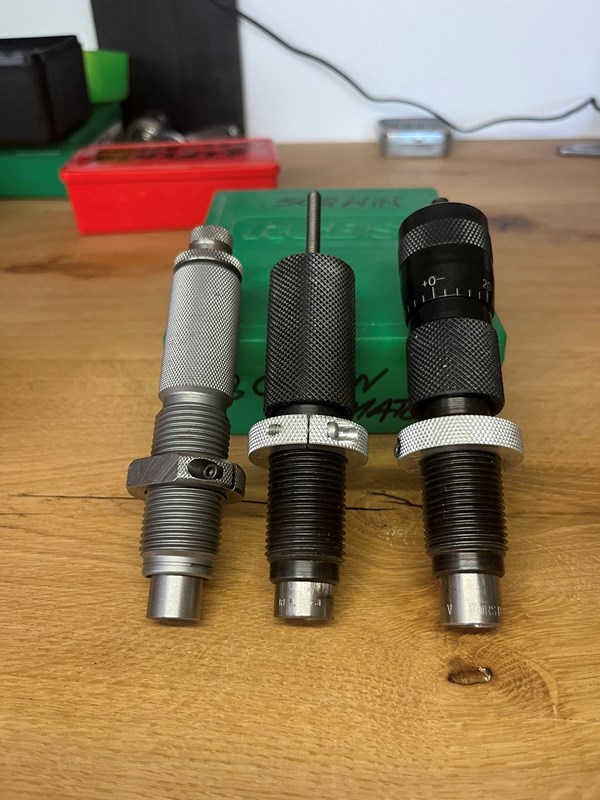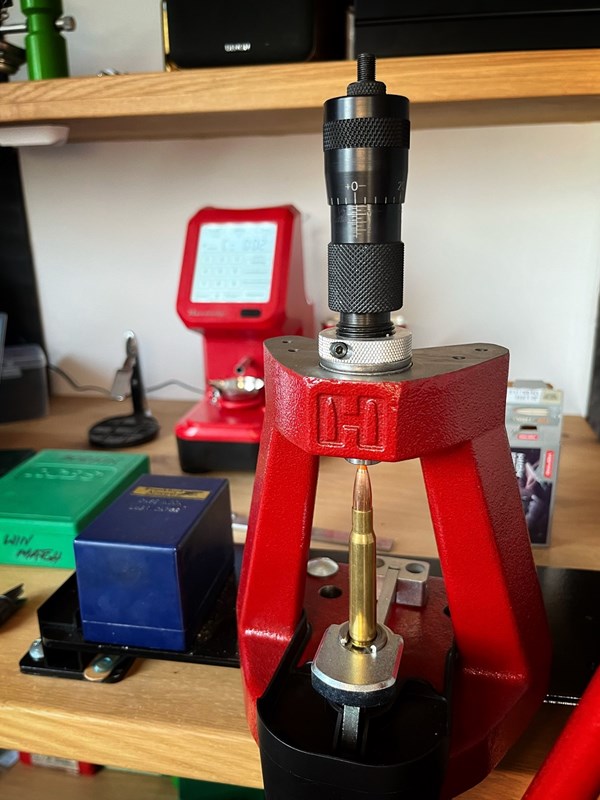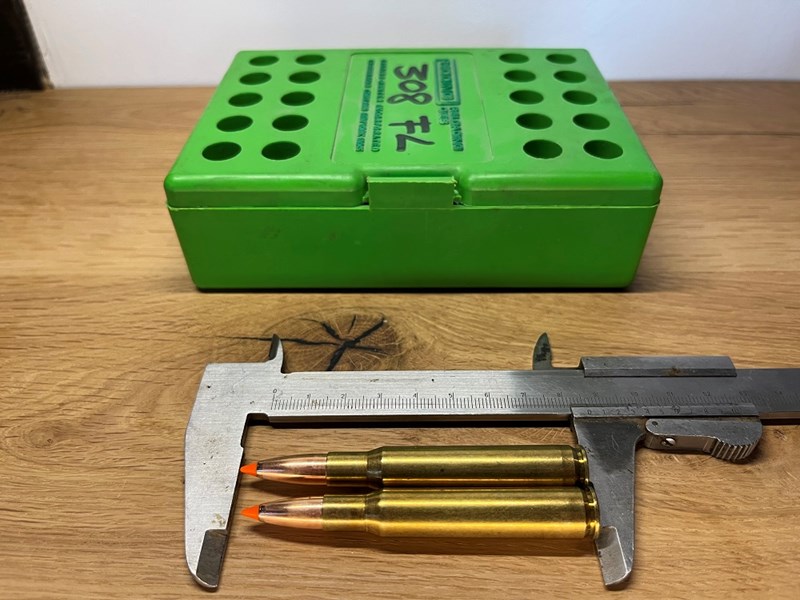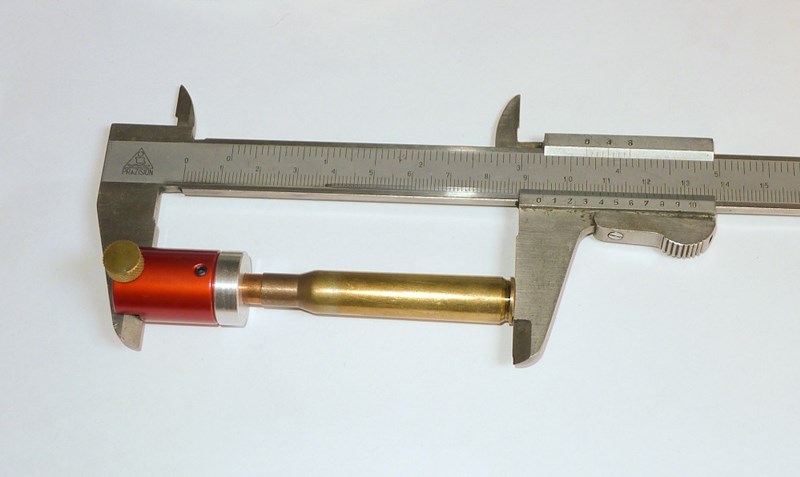An introduction to reloading - Part 6
How deep to seat the bullet? How tight should the neck be? Is a crimp needed? How to avoid misalignment? The reloader must find the right answers to these questions during the final phase of designing your own cartridge.
OAL- Overall Length
Reloading manuals along with loads for different powder/bullet combination provide a number called cartridge Overall Length (OAL, or COAL). Sticking to this value when developing your own loads is important for two reasons at least:
1. all the resulting data (pressure and velocity) depends on the seating depth (it has the obvious impact on the actual case chamber volume)
2. officially published dimensions are in accordance to the CIP and SAAMI standards, which means, that the cartridge will fit into any factory rifle (manufactured with these standards).
So you can start with the OAL provided by the manufacturer in the manual, but it often turns out that you would want to manipulate this parameter for various reasons (or will be forced to do so).
When looking for the so called “sweet load” (a powder charge that produces the best grouping), after finding what appears to be the best load, it is worth trying the same recipe for a few more cartridges with a slightly deeper or shallower seating. This manipulation affects not only the initial pressure (as mentioned above), but changes the original position of the projectile relative to the forcing cone of the barrel. Many people reloading for precision shooting believe that often the best results are achieved when the bullet is very close (less than approx. 0.25 mm) to the lands or even actually touches them. That said, one has to keep in mind, that this approach changes the initial pressure and has to be performed with even more care and attention!
The spot on the surface of the bullet that touches the bore first is called “ogive”. For slender bullets with a strongly spindly shape (eg. the Strike family), it will be located more to the rear, for more traditionally shaped bullets with a round nose it will be closer to the front. So it's easy to imagine a situation that for two cartridges loaded with bullets with ogive located in a different spots, making them seat close to the lands will be achieved with a completely different OAL.
BTBO - Base to bullet ogive
Some reloaders therefore believe that it is not so much the overall length of the cartridge that is important, but the Base to Bullet Ogive (BTBO) length. To be able to determine it, it is necessary to use comparators. Thanks to them, you can compare this aspect of the length of cartridges with bullets of various designs. In addition, such a measurement is not sensitive to possible deformation of the lead tip of the bullet or uneven finish of the hole in hollow point bullets. The die will seat them equally deep, however, due to imperfections, the OAL may vary, causing uncertainty as to whether individual operations have been performed correctly. It is very important to remember (and record) how the measurement was made - the OAL and BTBO are different things and confusing them can have serious consequences!
Things to remember
When planning the OAL on your own, you should remember that changing the seating depth affects the initial pressure - it increases with the deeper insertion of the bullet, which causes a reduction of the powder chamber volume in the case.
Another rule is that the bullet should not seat too shallow in the neck of the case - it is more difficult to maintain the axiality of the cartridge during transportation, loading the weapon, stowing it in an ammo pouch, etc., which will almost certainly negatively affect accuracy.
For hunting purposes, it is assumed that seating depth should not be smaller than the diameter of the caliber. The upper limit is the size of the cartridge chamber or the length of the magazine. The latter is very easy to measure, the first one might be a little more difficult. There are several ways to determine this value:
- You can do a dummy round with a shallowly seated bullet and iteratively shorten until you can close the bolt of the gun. Similar to how a go- and no-go gauge is used by gunsmiths.
- Some cut along the neck of the shell so that it does not hold the bullet too tightly and push it with the breech, and the fields of the barrel will push it deep enough inside. In practice, however, this method is often inaccurate - the bullet sometimes jams slightly in the thread, causing measurement errors - it forces you to make several or a dozen or so measurements to obtain reliable results.
- The most accurate is to use a special tool called overall length gauge, which inserts a round (a modified case with a loosely seated bullet) into the barrel. After moving the bullet forward until it touches the bore, the system is locked with a screw - you can accurately measure its length, which corresponds to the max OAL.
Seating dies
Manufacturers offer seater dies of very different designs: from the simplest to sophisticated, equipped with micrometer screws, systems ensuring high axiality, crimp adjustment, etc. Regardless of the construction, all of them require initial setting in the press - screwing the die too deep results in crushing case or its slight bulge, sometimes barely noticeable, but in a way that could jam the gun.
All dies have a collar that forces the bullet deep into the neck of the case. Most dies are adjusted with a screwdriver and a locknut. More expensive models, equipped with micrometer adjustment, which allows for precise OAL adjustments as well as easy change of settings when changing the type of bullet.
This fancy device is very useful (and usually expensive) it is however not necessary. Many reloaders, instead of using micrometer adjusters and making notes of particular settings for individual cartridges, keep dummy rounds instead and use basic dies. If necessary, they raise the seating stem high enough, insert the dummy into the die and screw the stem down until it meets the resistance of the bullet.
Neck tension
The neck tension on the bullet largely depends on how the case was sized (and also on the thickness of its walls). However, it is possible to obtain an additional crimp. Some sizing dies allow the very edge of the case to be folded inward (provided the bullet has a machined groove or a notched strip at that point). Before using this method, it is absolutely necessary to unify the length of the scales - discrepancies will lead to a weaker grip on the shorter scales and to deformation of the longer ones.
There are of course special crimp dies. They are primarily used in reloading magnum rounds for hunting purposes. Strong neck tension can negatively affect accuracy, but this is of lesser importance than changes in the OAL of cartridges stored in the magazine during a shot.
Bullet alignement
When the cartridge assembly is finished, it is worth checking the alignment of the bullets. Even a slight skew may cause that, despite the use of top-class components and the perfect load selection, it will not be possible to obtain a satisfactory grouping of holes on the target.
The simplest way to check is to observe the tip of the bullet as the cartridge rolls over a level surface. If a runout is observed, the cartridge is definitely not suitable for precision shooting.
More accurate measurements are made possible by instruments equipped with dial indicators signaling any eccentricity of the shell and bullet. Deviations are usually due to the wrong position of the projectile in the initial phase of seating phase. This problem is solved by match-grade dies, the construction of which allows the projectile to be kept vertical when seating.
In the case of ordinary dies, you can try seating divided into smaller stages: the bullet is inserted into the neck. up to 1/3, then the cartridge is lowered and turned by 120°. The action is repeated three times until the final OAL is obtained. A misalignment that occurs nevertheless for many or all cartridges in a run may be a result of a faulty case holder or one of the dies.

Seating dies (L to R): two standard ones (with additional sleave for bullet guidence) and a match die with a micrometer adjustment

A micrometer is very useful for making exact changes to the OAL or when using different bullets with the same caliber

Sometimes changing the OAL makes a big difference

OAL comparator helps measuring the catridge length from the bottom of the case to the bullet's ogive